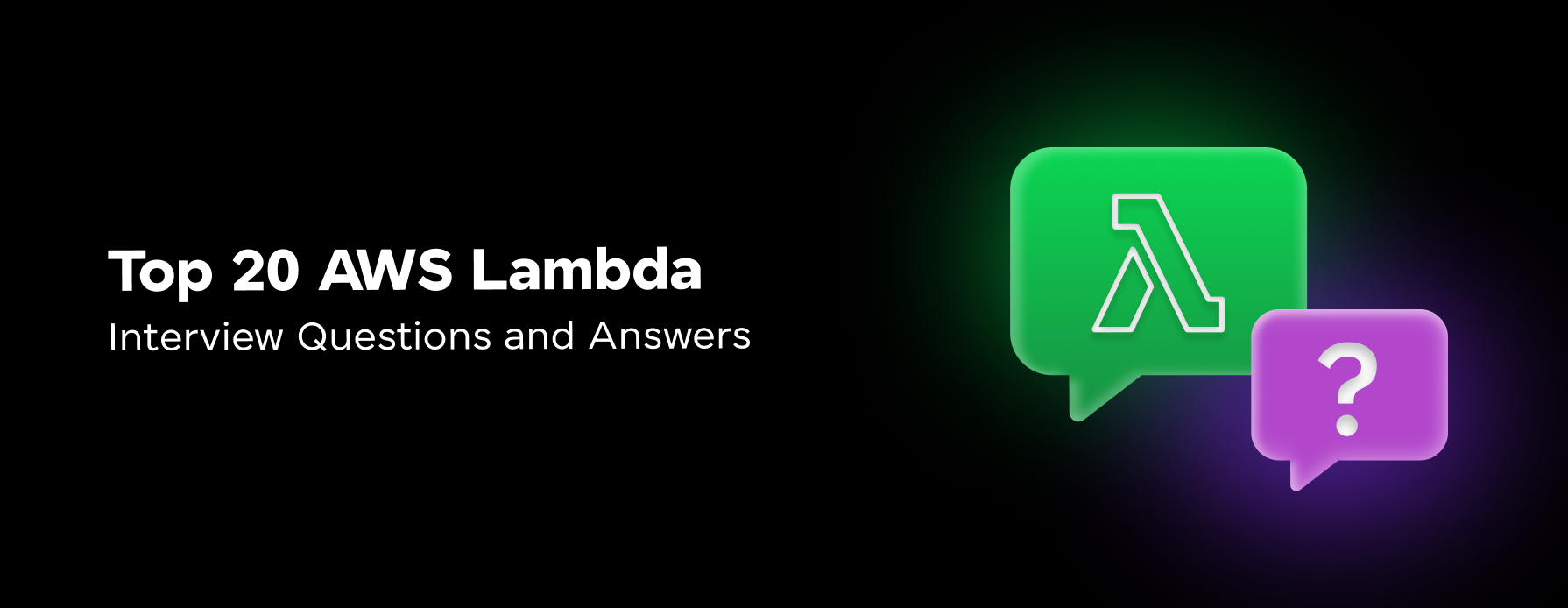
Top 20 AWS Lambda Interview Questions and Answers
Feb 18, 2025 5 Min Read 3727 Views
(Last Updated)
AWS Lambda is like having a magic wand for your code. No need to worry about servers or infrastructure—just write your code and let Lambda handle the rest. It kicks into action when something happens, like data changes or user actions, and can handle a ton of requests without breaking a sweat.
Getting ready for a tech interview? Knowing AWS Lambda inside out can give you a leg up, especially if you’re eyeing roles that need serverless know-how. Here, we’ll tackle some top AWS Lambda interview questions and break them down so you can walk in feeling like a pro.
Table of contents
- Top AWS Lambda Interview Questions and Answers
- Wrap Up
- FAQs on AWS Lambda Interview Questions and Answers
- Top AWS Lambda Interview Questions and Answers
- What is the main use of AWS Lambda?
- What is the limitation of Lambda in AWS?
Top AWS Lambda Interview Questions and Answers
Let’s talk about the Top AWS Lambda Interview Questions and Answers you should know to ace the interview:
Before we move to the next part, you should have a deeper knowledge of DevOps concepts. You can consider enrolling yourself in GUVI’s DevOps Career Program, which lets you gain practical experience by developing real-world projects and covers technologies including Agile, Scrum, Linux, Git, Bash Scripting, Dockers, Containers, AWS infrastructure, etc.
Additionally, if you would like to explore AWS Infrastructure through a Self-paced course, try GUVI’s AWS Infrastructure for Beginners certification course.
1. What is AWS Lambda?
AWS Lambda is a serverless compute service that runs your code in response to events and automatically manages the underlying compute resources for you.
2. How does AWS Lambda handle scaling?
AWS Lambda automatically scales by running code in response to each trigger. Your code runs in parallel and processes each trigger individually, scaling with the size of the workload.
3. What are some common use cases for AWS Lambda?
Real-time file processing, data transformation, back-end services for web and mobile applications, and event-driven applications.
4. How do you monitor and troubleshoot AWS Lambda functions?
You can use AWS CloudWatch to monitor and log your Lambda functions. CloudWatch Logs, CloudWatch Metrics, and AWS X-Ray help you track performance and troubleshoot issues.
5. What are the limitations of AWS Lambda?
AWS Lambda has a maximum execution timeout of 15 minutes, a maximum package size of 50 MB (zipped), and a maximum memory allocation of 3,008 MB.
You should also try working on Hands-on Labs for AWS To Get You Started
6. How do you secure AWS Lambda functions?
Use AWS Identity and Access Management (IAM) roles to control access, encrypt environment variables, and use VPCs for network security.
7. Can you explain the concept of cold starts in AWS Lambda?
A cold start occurs when a Lambda function is invoked after not being used for a while, causing a slight delay as the function container is initialized. This can affect performance but is mitigated by keeping functions warm.
8. How do you optimize the performance of AWS Lambda functions?
Optimize performance by minimizing package size, reusing connections, using appropriate memory allocation, and keeping functions warm.
9. How does AWS Lambda work?
Think of AWS Lambda as your code’s personal assistant. It follows an event-driven model. When something happens—like a file upload to Amazon S3 or a new message in an Amazon SQS queue—AWS Lambda jumps into action and runs your code, known as a Lambda function. Each function operates independently, meaning it can be triggered and scaled on its own.
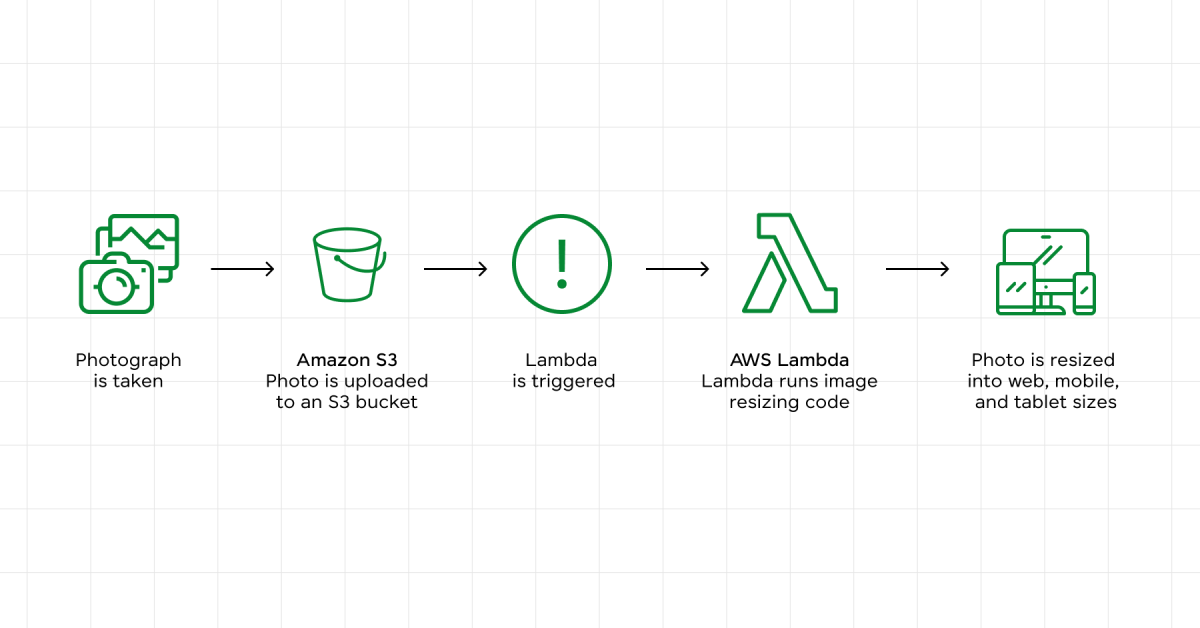
When a Lambda function gets triggered, AWS Lambda spins up the needed compute resources, runs your code, and then scales down automatically. This on-demand model keeps things efficient and cost-effective.
10. What are the key features of AWS Lambda?
AWS Lambda packs a punch with several standout features:
- Scalability: It automatically scales based on the workload, so your functions can handle anything from a trickle to a flood of traffic.
- Pay-per-Use Pricing: You only pay for the compute time your functions use. This is great for apps with fluctuating workloads.
- Integration with AWS Services: AWS Lambda plays well with other AWS services. You can build complex apps by combining Lambda with services like Amazon S3, DynamoDB, or Kinesis.
- Support for Multiple Languages: Whether you code in Python, Node.js, Java, C#, Ruby, or Go, AWS Lambda has you covered. Use the language you’re comfortable with.
- Ease of Deployment and Management: AWS Lambda offers a user-friendly interface for deploying and managing functions. You can version, monitor, and troubleshoot your functions using the AWS Management Console or the AWS CLI.
So, you’re gearing up for an AWS Lambda interview? Let’s dive into some questions you might face and how to tackle them like a pro.
11. How is AWS Lambda different from EC2?
AWS Lambda and EC2 are both heavy hitters in the Amazon Web Services lineup, but they play different roles. Here’s a quick rundown:
| Aspect | AWS Lambda | EC2 |
|---|---|---|
| Service Type | Serverless compute service | Virtual server service |
| Infrastructure Management | AWS handles it all | You manage it |
| Scalability | Auto-scales with demand | You scale it manually |
| Billing | Pay for what you use | Pay per hour |
| Cold Start | Might have a slight delay | Can be pre-warmed for speed |
| Use Cases | Short, event-driven tasks | Long-running, steady workloads |
Also Read: Is AWS Certification Worth It? | Best AWS Certifications 2024
12. What are the supported languages in AWS Lambda?
AWS Lambda is pretty flexible when it comes to programming languages. You can code your functions in:
- Python
- JavaScript (Node.js)
- Java
- C#
- PowerShell
- Ruby
- Go
This variety means you can stick with what you know best or pick the right tool for the job.
13. How can you trigger an AWS Lambda function?
AWS Lambda functions can be set off by a bunch of different events. Here are some common triggers:
- API Gateway: When someone hits an API endpoint.
- S3: When files are added, changed, or deleted in an S3 bucket.
- DynamoDB: When data in a DynamoDB table changes.
- CloudWatch Events: For scheduled tasks or specific log events.
- SNS: When a message is published to an SNS topic.
Alright, let’s get into some of the nitty-gritty details about AWS Lambda functions. These are the kinds of questions that might pop up in an interview to see if you really know your stuff.
14. What’s the Max Execution Time for an AWS Lambda Function?
So, how long can an AWS Lambda function run before it gets the boot? The max timeout is 15 minutes, or 900 seconds if you prefer. But here’s the kicker: if your function needs that long, you might want to rethink your approach. AWS Lambda is built for quick, stateless tasks. If your function is taking forever, it might be time to break it down into smaller chunks or hand off the heavy lifting to something like AWS Step Functions or AWS Batch.
15. How Do You Handle Errors in AWS Lambda Functions?
Errors happen. It’s how you deal with them that counts. Here are some ways to keep your Lambda functions running smoothly:
- Error Logging: Make sure you’re logging errors. Use AWS CloudWatch to capture logs so you can dig into what went wrong later.
- Error Handling: Use try-catch blocks in your code to catch exceptions. Customize your error messages to make them useful for debugging.
- Retries and Exponential Backoff: Set up retries for transient errors. Use exponential backoff to space out retries and avoid hammering your system.
- Dead Letter Queues (DLQ): If all else fails, send failed events to a DLQ. You can use Amazon SQS or SNS to capture these and deal with them later.
If you’re someone confused among various AWS certifications, here’s Which AWS Certification is Best For Developers?
16. What’s the Deal with Event Sources in AWS Lambda?
Event sources are what trigger your Lambda functions. They let you respond to events from various AWS and non-AWS services. Here are some common ones:
- Amazon S3: Trigger a Lambda function when something happens in an S3 bucket, like a file being uploaded or deleted. Handy for processing files on the fly.
- Amazon DynamoDB: Set up Lambda to react to changes in a DynamoDB table. For instance, you can trigger a function when a new item is added or an existing one is updated.
- Amazon Kinesis: Use Lambda to process streaming data from Kinesis. This is great for real-time data processing.
- Amazon API Gateway: Trigger Lambda functions with HTTP requests via API Gateway. Perfect for building serverless APIs and microservices.
17. How to Make AWS Lambda Functions Faster?
To get the best out of AWS Lambda, try these tips:
- Function Design: Break your app into smaller, single-purpose functions. This makes it easier to scale and speeds up execution.
- Memory Allocation: Tweak the memory settings for your functions. More memory can mean faster runs but don’t go overboard and waste money.
- Cold Starts: Reduce cold start delays by using provisioned concurrency. This keeps some instances of your function ready to go.
- Concurrency Limits: Know your concurrency limits and set them wisely to avoid overloading and slowing down your functions.
- Optimized Code: Keep your code lean. Cut down on dependencies, avoid unnecessary I/O operations, and use efficient algorithms to speed things up.
Do check out: Code to Cloud Using Terraform and AWS: The Epic Guide to Automated Deployment
18. What Will AWS Lambda Cost You?
AWS Lambda uses a pay-as-you-go model, but costs can add up. Here’s what to watch out for:
- Execution Time: Longer runs cost more. Optimize your code to run faster and cut down on unnecessary tasks.
- Memory Allocation: More memory means higher costs. Find the sweet spot for your function’s needs.
- Concurrent Invocations: More simultaneous runs can spike costs. Monitor and adjust concurrency to keep costs in check.
- Data Transfer: Moving data, especially large amounts, can get pricey. Be mindful of data transfer costs with other AWS services.
- Request and Invocation Rates: High request rates can drive up costs. Optimize your app to avoid unnecessary calls.
For a deeper dive into AWS Lambda costs, see our article on AWS Lambda cost optimization.
19. How to Keep an Eye on and Fix AWS Lambda Functions?
Keeping AWS Lambda functions running smoothly means good monitoring and debugging. Here’s how:
- CloudWatch Logs: Use CloudWatch Logs to capture and analyze logs from your functions. Set up log retention and alarms for key metrics.
- Custom Metrics: Create custom metrics in CloudWatch to track things like invocation counts, error rates, and run times.
- X-Ray Integration: Use AWS X-Ray to see inside your app’s performance and find bottlenecks.
- Error Handling: Build solid error handling and logging to catch and fix issues quickly.
- Debugging Tools: Use AWS Toolkit for your favorite IDE to test and debug functions locally before going live.
Here are a few tips you must follow to avoid failure in the AWS certification exam.
20. How can you monitor the performance of AWS Lambda functions?
Keeping an eye on your Lambda functions is key to making sure they run smoothly and don’t break the bank. AWS gives you a few tools to help:
- AWS CloudWatch: Tracks metrics like invocation count, errors, duration, and concurrency. It also logs detailed info about invocation requests and responses.
- AWS X-Ray: Helps you debug and analyze your functions with request tracing and mapping to find performance bottlenecks.
- AWS Lambda Insights: An enhanced monitoring solution integrated into CloudWatch, offering a deeper look into performance metrics and issues.
Kickstart your career by enrolling in GUVI’s DevOps Career Program where you will master technologies including Linux, Git, AWS, etc, and build interesting real-life DevOps projects.
Alternatively, if you want to explore AWS infrastructure through a Self-paced course, try GUVI’s AWS Infrastructure for Beginners certification course.
Wrap Up
Now that you have read these top interview questions and answers on AWS Lambda, it’s time to step up with your interview process. Master these AWS Lambda Interview Questions and Answers, and you’ll be ready to tackle top AWS Lambda interview questions with confidence, showing off your AWS Lambda skills in interviews.
FAQs on AWS Lambda Interview Questions and Answers
Top AWS Lambda Interview Questions and Answers
Three components comprise AWS Lambda:
1. A function: the actual code that performs the task.
2. A configuration: specifies how your function is executed.
3. An event source (optional): the event that triggers the function. You can trigger with several AWS services or a third-party service.
What is the main use of AWS Lambda?
AWS Lambda is a serverless, event-driven compute service that lets you run code for virtually any type of application or backend service without provisioning or managing servers. You can trigger Lambda from over 200 AWS services and software as a service (SaaS) applications, and only pay for what you use.
What is the limitation of Lambda in AWS?
AWS Lambda is meant for short functions to execute for short durations so the AWS Lambda memory limit has been kept to a max of 3GB. It starts at 128 MB and can be increased by 64 MB increments. This memory is mostly sufficient for event-driven business functions and serves the purpose.






















![Most Important Interview Questions in Data Visualization [Part-2] 3 Important Interview Questions in Data Visualization](https://www.guvi.in/blog/wp-content/uploads/2022/09/data-visualization-interview.jpg)

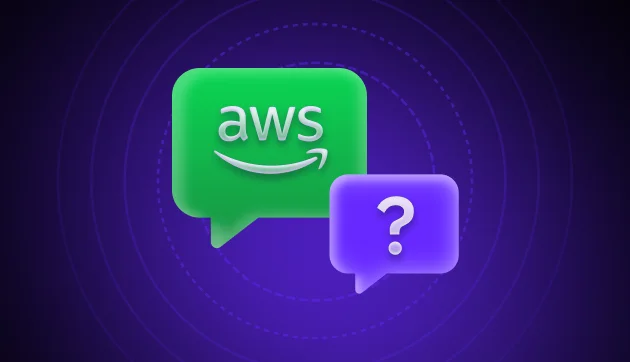



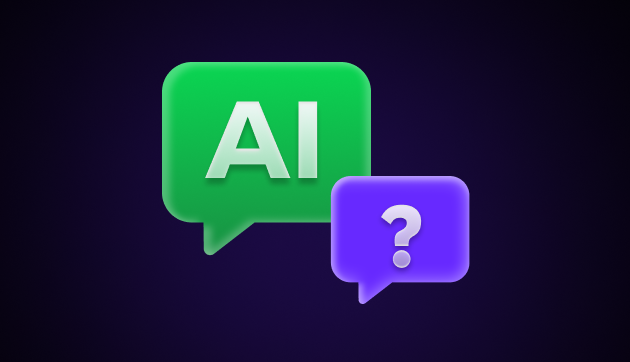

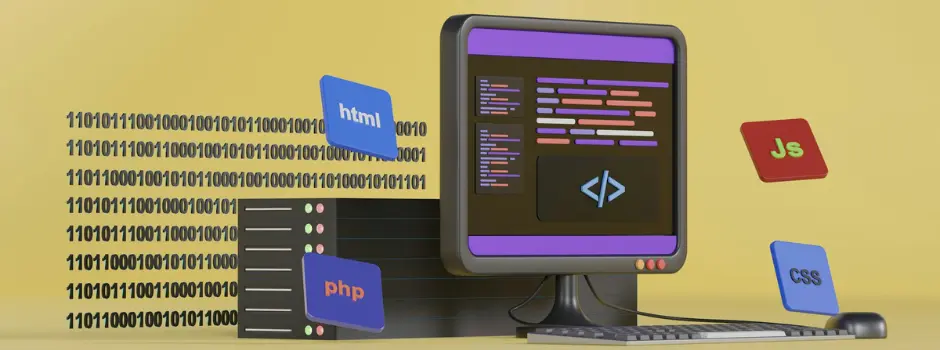
Did you enjoy this article?